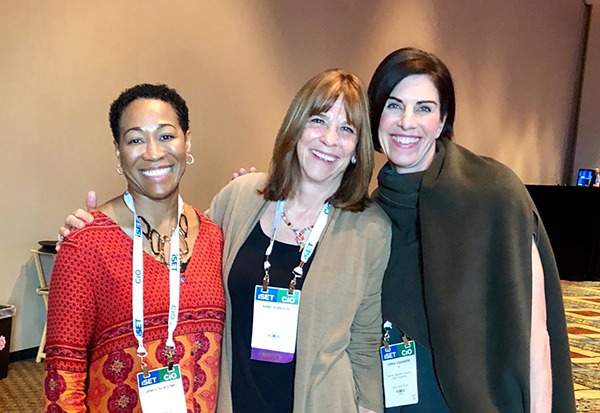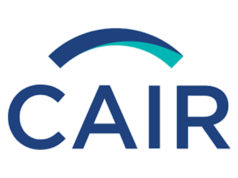
Fostering a diverse interventional radiology (IR) workforce is difficult, but vital, because heterogeneous groups can be more innovative, be better at complex problem-solving, achieve superior outcomes and be more successful financially than their homogeneous counterparts, said Anne Roberts at ISET 2018.
Anne Roberts, division chief, Vascular and Interventional Radiology and professor of Radiology, University of California San Diego Health, USA, delivered the annual Charles G Tegtmeyer lecture at the International Symposium on Endovascular Therapy (ISET; 3–7 February, Hollywood, Florida, USA).
Roberts focused on diversity when speaking on the topic “Incorporating new ideas into practice: challenges and solutions for today’s world”.
“Diversity is probably one of the biggest challenges in today’s world and this is reflected in medicine, particularly in interventional radiology. We need policy that encourages tolerance and appreciation for people of different backgrounds,” she said.
Roberts pointed out that there were many aspects to diversity including race/ethnicity, gender, socioeconomic background and sexual orientation. Outlining some of the relevant numbers, particular to radiology in the USA, she noted that under-represented minorities made up about 8% of radiology trainees in the USA compared to 15% of medical school and graduate medical education trainees. When it came to women, just 27% of radiology trainees were women when compared to the 48% who went to medical school and 46% of graduate medical education trainees.
Why embrace diversity?
Roberts referenced Katherine W Phillips’ article, published in Scientific American in 2014, “How diversity makes us smarter” to provide some answers. She noted: “Research shows that socially diverse groups are more innovative than homogeneous groups. They are also better at solving complex, non-routine problems. Simply interacting with individuals who are different, forces group members to prepare better; to anticipate alternative viewpoints and to expect that reaching consensus will take effort.”
Phillips also states that diversity has been shown, in multiple studies, to enhance financial performance. Groups with diversity outperform groups with no diversity, whereas being with similar others leads to thinking that we all hold the same information and share the same perspective. “Diversity jolts us into cognitive action in a way that homogeneity does not,” said Roberts.
On the other hand, Roberts said, members of a homogenous group “tend to feel they will agree with one another, will understand one another’s perspectives and beliefs and will be able to easily come to a consensus. Heterogenous groups anticipate differences in opinion and perspective and assume they will need to work harder for consensus.
“People may not like encouraging diversity because it is harder, but this can lead to better outcomes,” Roberts said.
Intelligent design for diverse organisations
Pointing to lessons that can be learned from other organisations that are looking to achieve greater diversity, Roberts noted that the successful improvement of gender representation and creation of inclusive environments were reliant on plans to support family requirements and salary equality. They also included prominent role models for under-represented minorities.
Roberts explained that professional society attention can help to mentor under-represented minorities and that the Society of Interventional Radiology (SIR) has already budgeted for outreach to these groups. “Institutions are also including specific questions to faculty candidates about their experience with encouraging diversity. For instance, the University of California requires individuals who are applying for faculty positions, or those who are being promoted, to describe what they have done to promote diversity,” she commented.
Barriers
Barriers to diversification in interventional radiology include inadequate specialty exposure; the specialty being perceived as having little patient contact or being less of a direct service to the community. An important barrier is the lack of role models and mentors. Bias can also play a key role, particularly when an equally qualified candidate is ranked lower for a position because of gender, race or ethnicity.
As potential solutions, Roberts proposed that the early exposure programmes to interventional radiology be expanded to student interest groups. “We need to encourage student application to existing summer fellowships and create summer internship programmes to enhance the competitiveness of future applicants. At national meetings, we need to showcase faculty who represent diversity, and who formally mentor students. We also need to improve education and the marketing of radiological professions. It is vital to include new and diverse members on residency selection committees and faculty search/promotion committees.”
She also called attention to other diversity issues such as the lack of appreciation for diversity of medical specialists in medical centres. Additionally, isolation within specialty silos, the lack of interaction between various specialties and within different areas of the hospital all meant there was less co-operation and sharing of experience. The tools and approaches used by one specialty could be applicable to others and interactions could improve all practices, she said.
“One of the challenges with society meetings is that they tend to isolate specialties and the subspecialty meetings tend to include mostly individuals from the specialty. This can result in disseminating a form of specialty “groupthink” by which people seek out and remember information that provides support for their pre-existing attitudes and beliefs,” she noted.
“It is a real credit to ISET and the Miami Cardiac and Vascular Institute (MCVI) that they have worked hard to try and breakdown the silos. ISET, with multiple specialties being involved has been a leader in this approach in conferences. MCVI, with the inclusion of multiple specialties within the institute has also been an example of the value of diversity,” commented Roberts.
“Striving for greater diversity involves leaving our comfort zone and coming together to embrace our differences. Humanity is plural not singular and everybody should be in, with nobody being “out”. Differences are not just to be celebrated, but are essential. We do not see things the same [way] and our power lies in that we do not see things the same,” Roberts concluded.










